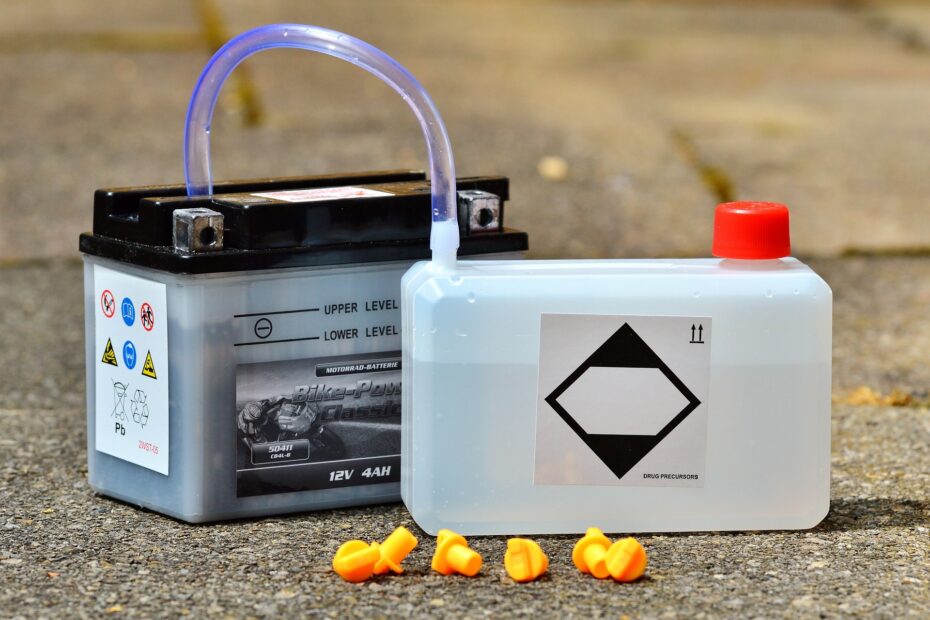In a previous post, we delved into the intricacies of maintaining your motorcycle’s electrical system, emphasizing its crucial role in your bike’s overall performance. A pivotal component of this system that requires special attention is the battery. Ensuring your sport motorcycle’s battery is in optimal condition is not just about reliability; it’s about safety and performance. This in-depth guide will walk you through the nuances of sport motorcycle battery maintenance, shedding light on why it matters and how often you should perform these checks.
Why Battery Maintenance is Crucial:
1. Reliable Starting:
A well-maintained battery guarantees that your motorcycle starts promptly, especially during cold mornings or after prolonged periods of inactivity. A dead battery can leave you stranded, compromising both convenience and safety.
2. Electrical Functions:
Beyond starting your bike, the battery powers various electrical components such as headlights, indicators, and ignition systems. A faltering battery can lead to erratic behavior of these systems, affecting your riding experience and safety.
3. Longevity:
Regular maintenance extends the lifespan of your battery. Overlooking simple checks can accelerate wear and tear, necessitating premature replacements.
How Often Should You Check:
1. Battery Terminals:
- Visual Inspection: Examine the battery terminals for signs of corrosion, which appears as a white, powdery substance. Corrosion can hinder electrical conductivity, affecting your bike’s performance.
- Tightness: Ensure the terminals are securely connected. Loose connections can lead to voltage drops and intermittent electrical issues.
- Cleaning: If corrosion is present, clean the terminals using a mixture of baking soda and water. A wire brush can aid in removing stubborn deposits. After cleaning, apply dielectric grease to prevent future corrosion.
2. Voltage:
- Regular Testing: Invest in a multimeter to measure your battery’s voltage regularly. A healthy 12-volt battery should ideally read between 12.6 to 13.3 volts when fully charged.
- Charging: If the voltage falls below 12.0 volts, consider charging your battery using a compatible charger. Avoid overcharging, as it can lead to battery damage.
3. Water Levels (For Flooded Batteries):
- Inspection: If you own a flooded lead-acid battery, check the water levels periodically. Ensure the plates are submerged in water to prevent sulfation, a process that reduces battery efficiency.
- Refilling: If the water level is low, refill using distilled water. Avoid using tap water, as minerals can affect the battery’s performance. Always maintain the water level between the minimum and maximum marks indicated on the battery.
Additional Tips:
- Storage: If you’re storing your motorcycle for an extended period, consider disconnecting the battery or using a trickle charger to maintain optimal charge levels.
- Protection: Install a battery tender or a protective cover to shield your battery from extreme weather conditions, which can degrade its performance.
When is it Time to Change Your Motorcycle Battery?
While regular maintenance can significantly extend the lifespan of your sport motorcycle battery, there inevitably comes a time when replacement becomes inevitable. Recognizing the signs of a deteriorating battery is crucial to avoid unexpected breakdowns and maintain optimal performance. Here are some indicators that suggest it’s time to invest in a new battery:
- Diminished Cranking Power: If you notice that your motorcycle struggles to start, requiring multiple attempts before igniting, it’s a clear sign that your battery’s cranking power has significantly diminished. This symptom often indicates that the battery can no longer hold a charge efficiently.
- Slow Electrical Response: Pay attention to the responsiveness of your electrical components, such as headlights, indicators, and horn. If they exhibit a noticeable delay or appear weaker than usual, it could signal a failing battery unable to deliver consistent voltage.
- Physical Wear and Corrosion: Examine your battery for visible signs of wear, damage, or excessive corrosion that cannot be remedied through cleaning. Physical degradation often compromises the battery’s structural integrity, making it susceptible to leaks or short circuits.
- Reduced Capacity: As batteries age, their capacity to store energy diminishes. If you find yourself needing to recharge your battery more frequently, despite adhering to maintenance protocols, it may indicate irreversible internal damage or sulfation, reducing its overall efficiency.
- Age of the Battery: While age alone may not necessitate replacement if the battery has been well-maintained, it serves as a general guideline. Most sport motorcycle batteries have a lifespan of 3-5 years, depending on usage, environmental conditions, and maintenance practices. If your battery approaches or exceeds this timeframe, it’s prudent to consider replacement, even if it appears to be functioning adequately.
Conclusion:
Sport motorcycle battery maintenance is a critical aspect of ensuring optimal performance and safety on the road. By adhering to regular checks and addressing issues promptly, you can prolong your battery’s lifespan, reduce downtime, and enjoy uninterrupted riding experiences.
Looking for More Maintenance Tips?
For a comprehensive overview of all the important sport motorcycle maintenance chores, be sure to check out our overall guide “Sport Motorcycle Maintenance and Care Guide.” It covers essential maintenance tasks that are crucial for ensuring your sport motorcycle remains in top condition.
Stay electrified, stay safe, and keep the rubber side down!
